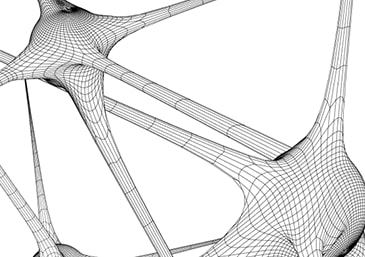

Summary
Most organisations successfully leverage automation to drive digital transformation but fail to infinitely scale the business. Establishing an RPA CoE can add those accelerators to any RPA program, delivering incremental value and improving the overall customer experience.
Read on to know how an RPA Centre of Excellence helped Openreach Limited reap the potential benefits of automation.
When organisations look at automation as an accelerator to drive their digital transformation journeys, the first step is choosing the right technology platform. This usually delivers quick wins, and RPA is considered a success. However, two years down the line, it often happens that the benefits of automation haven’t been replicated across the enterprise. The positive win in one part of the business should be easily transferrable to other business units so that the benefits stack up exponentially.
This article describes how setting up a CoE can add those accelerators to any RPA program. There’s a lot to learn from the simple five-step framework developed by Liam Spence and the team at Openreach Limited.

How Openreach has centralised strategic RPA to form the RPA Centre of Excellence
Openreach Limited is one of the world’s biggest communication companies and connects millions of people across the UK – from homes and businesses to schools, hospitals, and broadcasters. As a wholly-owned subsidiary of BT Group, Openreach builds, maintains, and manages the UK telecommunications network. Supporting over 650 communications providers who sell phone, broadband, and Ethernet services to homes and businesses – both large and small. Openreach Limited runs the UK’s digital network.
The start of our RPA journey
It was three years ago when I became involved with the strategic implementation of AssistEdge RPA in Openreach. The initial two-year programme focused on automating desk-based activities within the Service Delivery division, enabling our desk agents to focus on complicated engineering solutions that help our customers stay connected.
Over the course of the programme, we pushed RPA beyond the limits of ‘traditional automation’ by innovating with the support of AssistEdge. We have created SMS based self-serve solutions for Openreach engineers and have even deployed cognitive RPA. In our case, this means combining a Natural Language Processor (NLP), which reads free-form notes before predicting what should happen next with a customer order, and an RPA, which executes those transactional next steps.
This journey provided us with the experience of determining what makes a good automation idea, along with how to develop and successfully deploy automation into an operational environment. The success of the programme allowed us to transition into the next part of our journey – making RPA infinitely scalable and accessible to the rest of the business, ensuring all at Openreach could reap the potential benefits of RPA.
The reason we set up the RPA CoE
Our RPA Centre of Excellence was established in response to parts of the business-facing automation roadblocks. There was an apparent demand from various teams to introduce automation within their space, but a variety of factors blocked them from going further with their ideas.
One of the biggest roadblocks was a lack of a centrally governed body that assists in coordinating how an automation idea converts into reality. Teams within Openreach were unaware of how to set up and manage a development team to turn their idea into a strategically implemented robot.
By forming the RPA CoE, we were able to remove the roadblocks and produce high-quality development of good automation ideas. The five-step framework that we have set up outlines what’s needed to progress onto the next step. Roles and responsibilities have been clearly defined, so all involved understand what’s expected of them.

Our five-step framework
The five-step framework is as follows:
-
Define: The person within a business with the expertise becomes the product owner, who’s responsible for the development delivery
-
Decide: The product owner takes the defined idea to their chief technology innovation office (CTIO) lead, who decides if the idea is suitable for RPA
-
Estimate: Our AssistEdge assessment team will review the requirements and provide a cost back to the product owner along with the development timescale
-
Fund: The product owner will take their business case to their finance lead for sign-off
-
Develop: A team of AssistEdge developers and a space on JIRA is provided to the product, along with a run-through of agile principles to support them on their automation journey
-
There must be an understanding of business processes before there’s an RPA implementation. If you rush to build RPA without a clearly defined end-to-end process, then you could end up doubling your timescale on the build
-
Having executive buy-in from the senior leadership team from the beginning – ideally, align with your company’s vision for digital transformation
-
A strong framework that you implement and stick to. The framework you set up has been set up for a reason; if you deviate and skip steps, it could do more harm than good
Hopefully, this provides some insight if you’re either kick-starting your RPA journey or have already begun and are considering setting up an RPA CoE.
Loved what you read?
Get 10 practical thought leadership articles on AI and Automation delivered to your inbox


Loved what you read?
Get 10 practical thought leadership articles on AI and Automation delivered to your inbox





